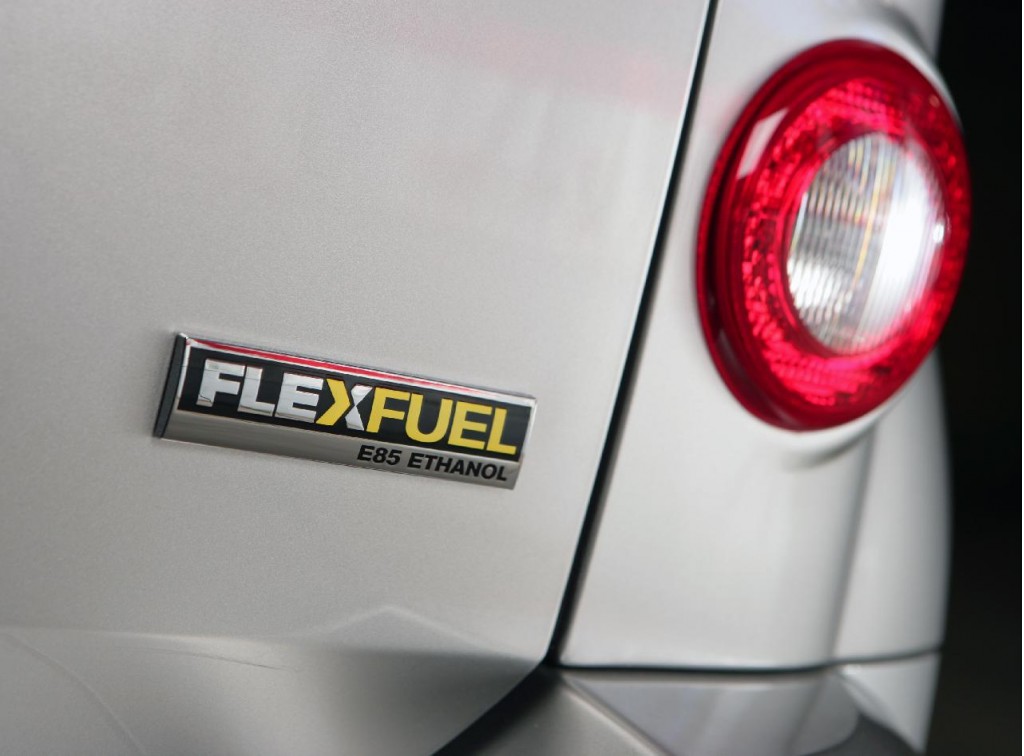The 2016 Chevrolet Volt plug-in hybrid has received numerous accolades, including this site's Best Car To Buy 2016 Award.
It's better-looking, quicker, quieter, and has a significantly longer all-electric range of 53 miles.
It is not, however, certified to use E85, the fuel blend containing 85 percent ethanol, and so it's not classified as a Flex-Fuel vehicle.
DON'T MISS: Chevrolet Volt: Green Car Reports' Best Car To Buy 2016
A couple of readers who are staunch biofuel advocates have asked why one of GM's greenest halo vehicles isn't capable of running its range-extending engine on non-fossil fuels.
So did Fuel Freedom, which published an entire post on the question.
So we reached out to Chevrolet for an answer.

GM's Pam Fletcher and Josh Tavel accept Green Car Reports 2016 Best Car To Buy award for 2016 Volt
Michelle Malcho from Chevy's communications group responded:
The engine was chosen to be the most efficient overall for the entire system. Plus, the goal was to get to regular unleaded gasoline as it was a top customer issue. The team didn't prioritize E85.
ALSO SEE: 2016 Chevrolet Volt First Drive: Plug-In Hybrid Home Run
Indeed, one consistent complaint from owners of the first-generation 2011-2015 Volt was that it was recommended to run on more expensive premium fuel.
And Chevrolet's data on driving and usage patterns for more than 80,000 Volts indicates that nine out of every 10 trips taken in the longer-range 2016 Volt will be powered exclusively from grid electricity used to recharge the battery.

2016 Chevrolet Volt
Some owners may find that their Volt engines don't switch on for days or weeks at a time, if their daily travels cover 50 miles or less and they recharge nightly.
That means that the reduction in carbon footprint from making the Volt capable of using E85 would be only a tiny fraction of that from running an 18-mpg SUV on the same fuel.
Finally, making a car's mechanical systems impervious to the corrosive effects of ethanol adds up to $100 in cost to its price, according to industry reports.
MORE: E85 By The Numbers: One Station In 50 For One Car In 20
Chevy wanted to keep the cost of the new Volt as low as possible--its base price is roughly $1,800 lower than last year's--and that cost wouldn't have helped at all.
We responded by asking why Chevrolet wouldn't offer buyers the ability to have an almost carbon-neutral 2016 Volt, since it's possible for owners to recharge the battery exclusively on renewable energy.
Giving the Volt E85 capability might reduce much of the rest of its carbon footprint from operating (depending on whose studies you read).

FlexFuel badge on E85-capable 2009 Chevrolet HHR
At the time this article was published, the carmaker had not responded to that question.
E85 remains available today at only about 2 percent of U.S. fueling stations--roughly 2,700 sites, according to U.S. data, of about 115,000 stations. It is not evenly distributed; it's most widely available in agricultural states.
[hat tip: Carney]
_______________________________________













